For a burgeoning group of schools, community organisations and gardens across the country, teaching children how to grow is about far more than the joys of harvesting your own produce – it’s about a new approach to education that’s beginning to take root.
While many schools teach pupils basic gardening skills or take the occasional class outdoors when weather permits, there are also ambitious projects aiming to transform outdoor learning and teach pupils valuable skills.
Children are now learning about all aspects of growing from an early age, as teachers use the outdoor classroom as a jumping off point for lessons on maths, science, agriculture and nutrition.
One such project is the Growing Schools Garden, set up in November 2006 to encourage more widespread educational opportunities away from the classroom and support learning outside. It now operates in more than 950 organisations across the country, including schools and local authorities.
The network works according to the Learning Outside the Classroom Manifesto, which states that: “Every young person should experience the world beyond the classroom as an essential part of learning and personal development, whatever their age, ability or circumstances.”
Looking beyond the traditional outcome indicators of education, it also focuses not only on what young people learn, but also how and where they learn too. Due to the different environment, for example, children practice skills like problem-solving, co-operation and communication, as well as opportunities for creativity, challenge and adventure.
Another pioneering project is Trees for Cities, which helps to run 162 Edible Gardens across the UK, transforming school grounds into greener and healthier places.
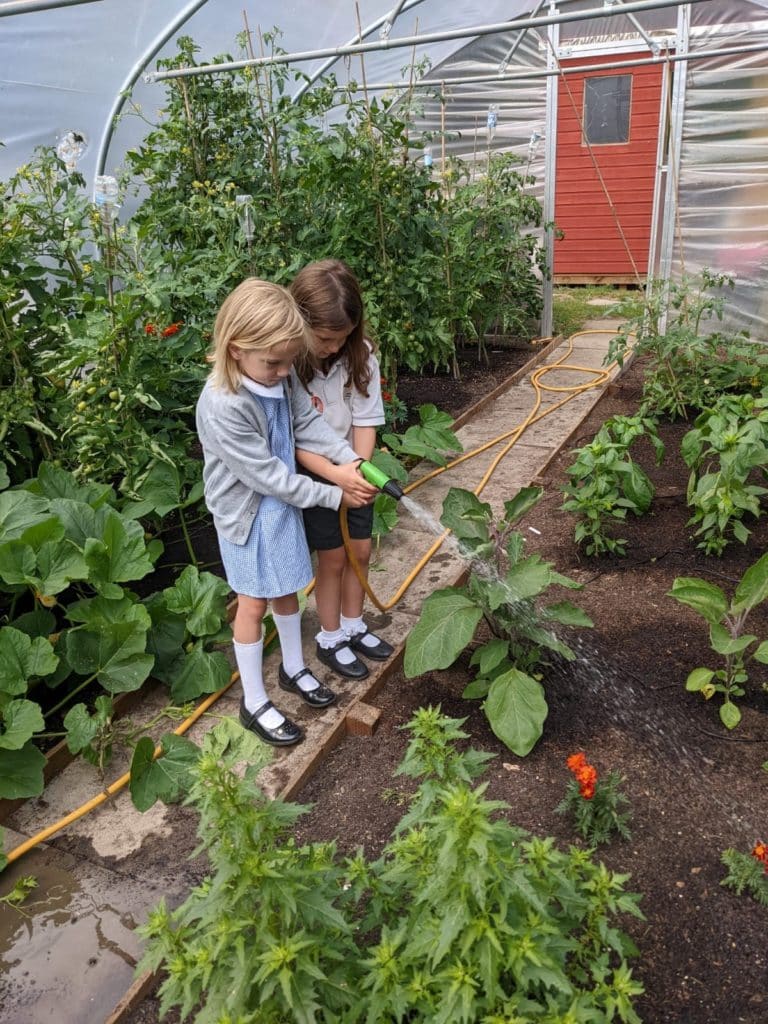
Greenside Primary School in London, meanwhile, boasts one of the most progressive food growing programmes in the UK. Six years ago it made the relatively radical decision to provide in-house vegetarian lunches for all its pupils using produce grown on site.
The move to vegetarian food became an opportunity to learn – showing the importance of sustainability, introducing the students to alternatives and giving them a fully-inclusive dining experience. Greenside is also home to a micro-bakery and accompanying plot of wheat.
The school is now moving towards a system of regenerative agriculture, and as part of this transition, it is running a year-long science project with all its pupils to deepen their understanding of science, soil health and the environment.
Soil will be tested and analysed to understand the levels of nitrogen, potassium and phosphorus as well as its ability to store carbon and water. Students will plant specific cover crops to boost nitrogen and improve carbon storage – all the while monitoring the results of the tests taken across the year.
In the Scottish Borders, Bosco Santimano set up You Can Grow at St Ronan’s Primary School in Innerleithen back in 2014 with a clear aim – to create an outdoor classroom to teach pupils, parents, teachers and volunteers how to grow vegetables.
“It was aimed at pupils, but also at the teachers to use an outdoor classroom; it was a win-win,” he says.
From nursery-age, children plant seeds and see them right through to harvest, in a space that includes raised beds, a greenhouse, a wormery and an outdoor classroom.
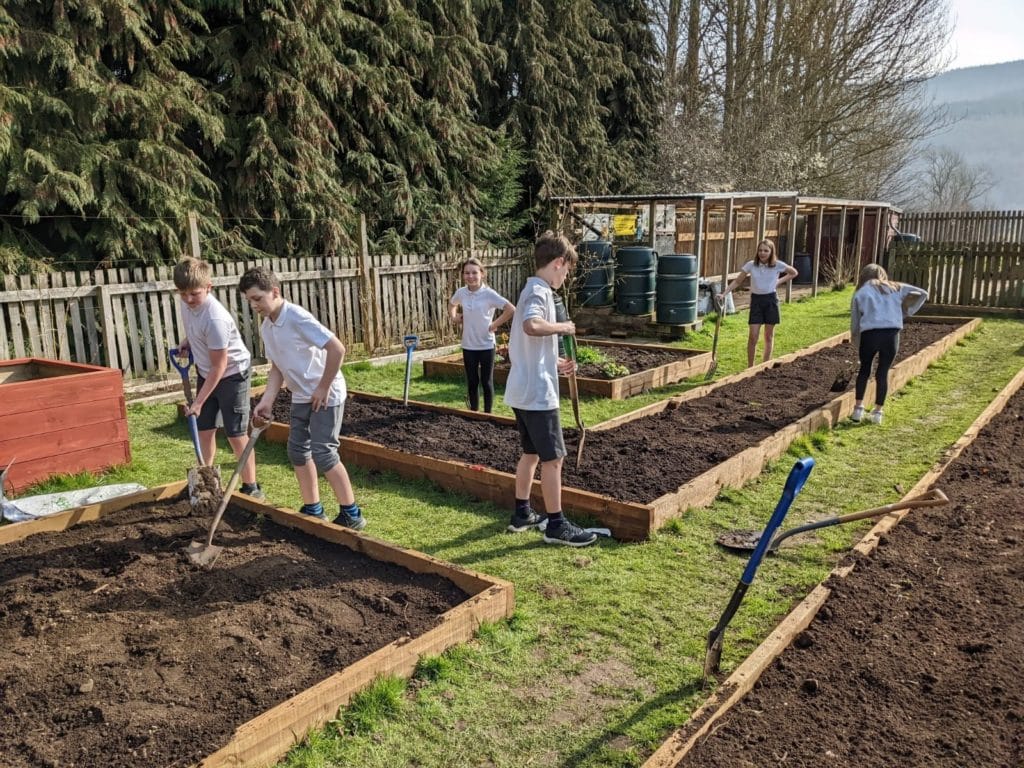
The project empowers children to plant, tend and harvest crops from the organic community garden located within the school grounds, and serves as a space that teachers can adapt according to educational needs.
Stuart Low, a class teacher at St Ronan’s, says it is particularly beneficial for kids who find learning in the classroom more difficult.
“It’s not just a garden, it’s a great place to take the kids and do other things. If they are planning to increase the size of the garden the kids can be part of the design of that,” he says. “It’s a great resource for any subject – even just taking writing or reading outside or as the setting for an imaginative story.”
This summer saw another Scottish growing initiative flourish – Dandelion’s Growing in Schools project, which saw over 100 specially adapted ‘grow cubes’ distributed to secondary and primary schools in the largest community-led growing experiment ever undertaken in Scotland.
The children used them to compare modern farming techniques with traditional growing and share the food they produced, alongside art, live music, and stories at hundreds of playground harvest events.
On a broader level, gardener and author of Organic Vegetable Growing, Rob Milne, believes that the education system is not adequately preparing children for their future if it does not provide them with some climate change adaptation skills, such as those at Greenside Primary learning about soil health from a young age.
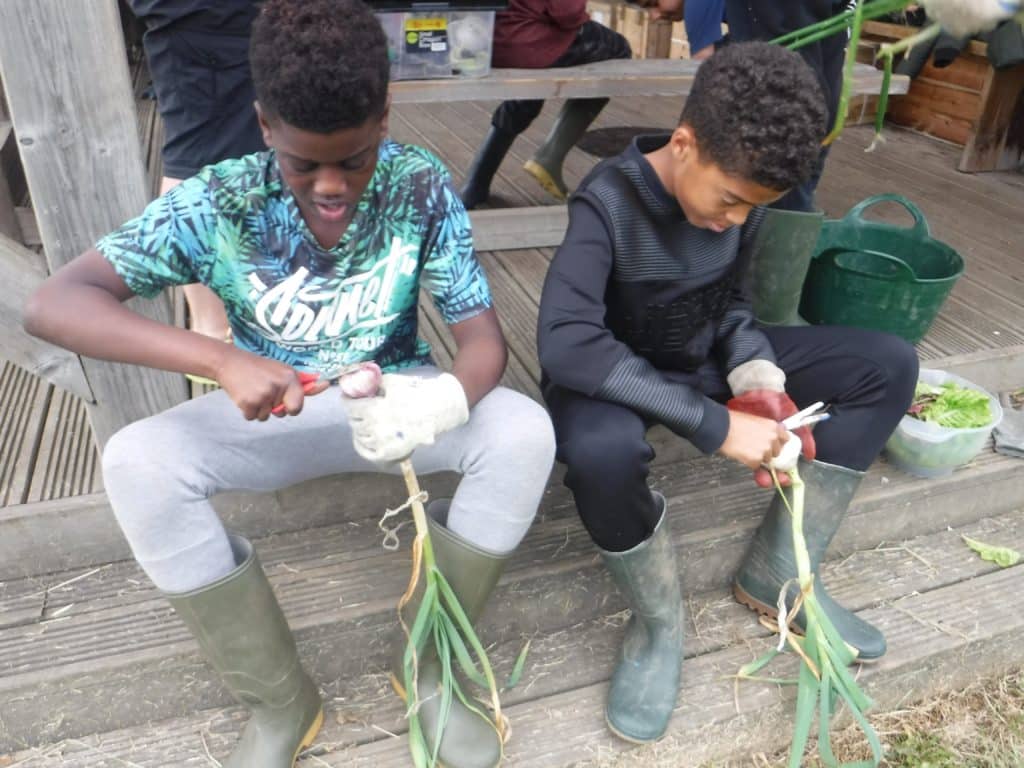
“The many ways that children benefit from gardening include the positive effect it has on class work [such as] concentration and enthusiasm. If the school day needs to be extended to accommodate gardening, so be it – it’s that important,” Milne says.
As teacher Dora Plant, from Ashbrow Primary in Huddersfield, which works with Grow to School, a community interest company making food growing practical in schools, puts it: “Children enjoy the opportunity to see the changes and have talked excitedly to each other and staff about the developments. I know that when the children arrive this morning they will want to go and check on their plants.”
From Arbroath to Innerleithen, Shepherd’s Bush to Yorkshire, radical growing projects are already way ahead of the curve.
What marks them out is an approach that teaches kids not just how to grow and the joys of outdoor education, but about interconnected food systems, soil health, nutrition and climate change.
In doing so, a new generation is learning how to look after plants, animals and the planet, and live more sustainable lives in the process.

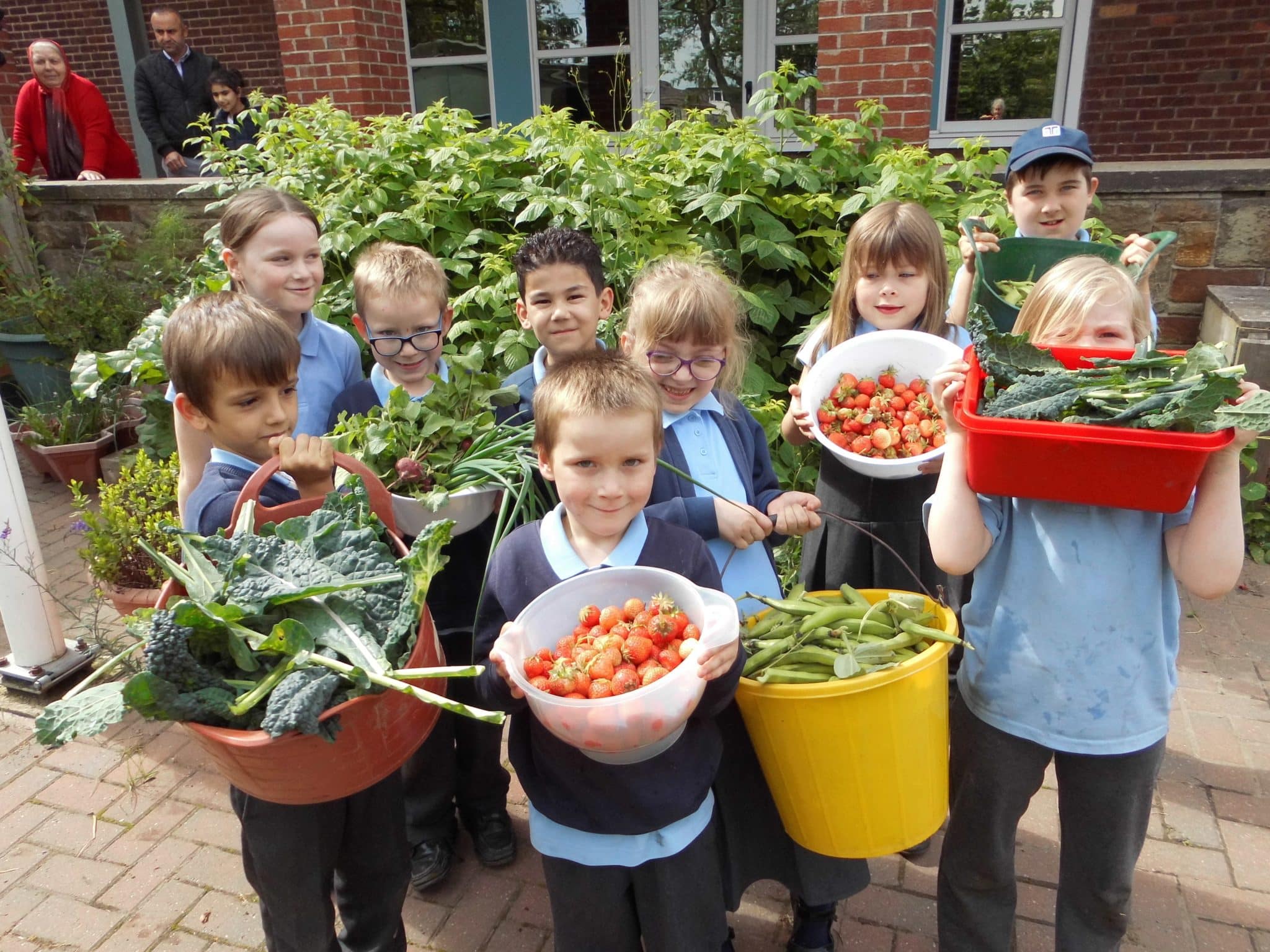
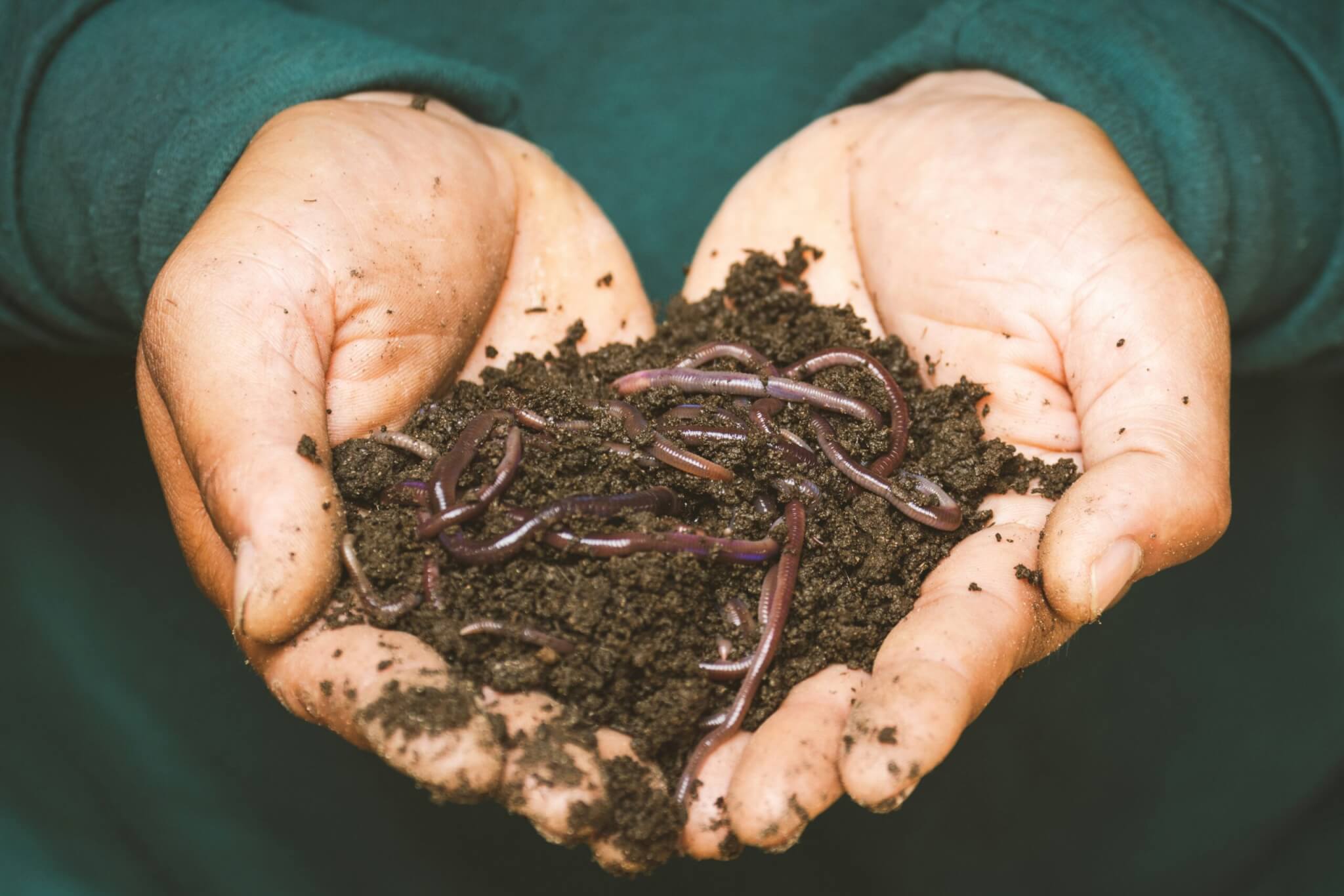
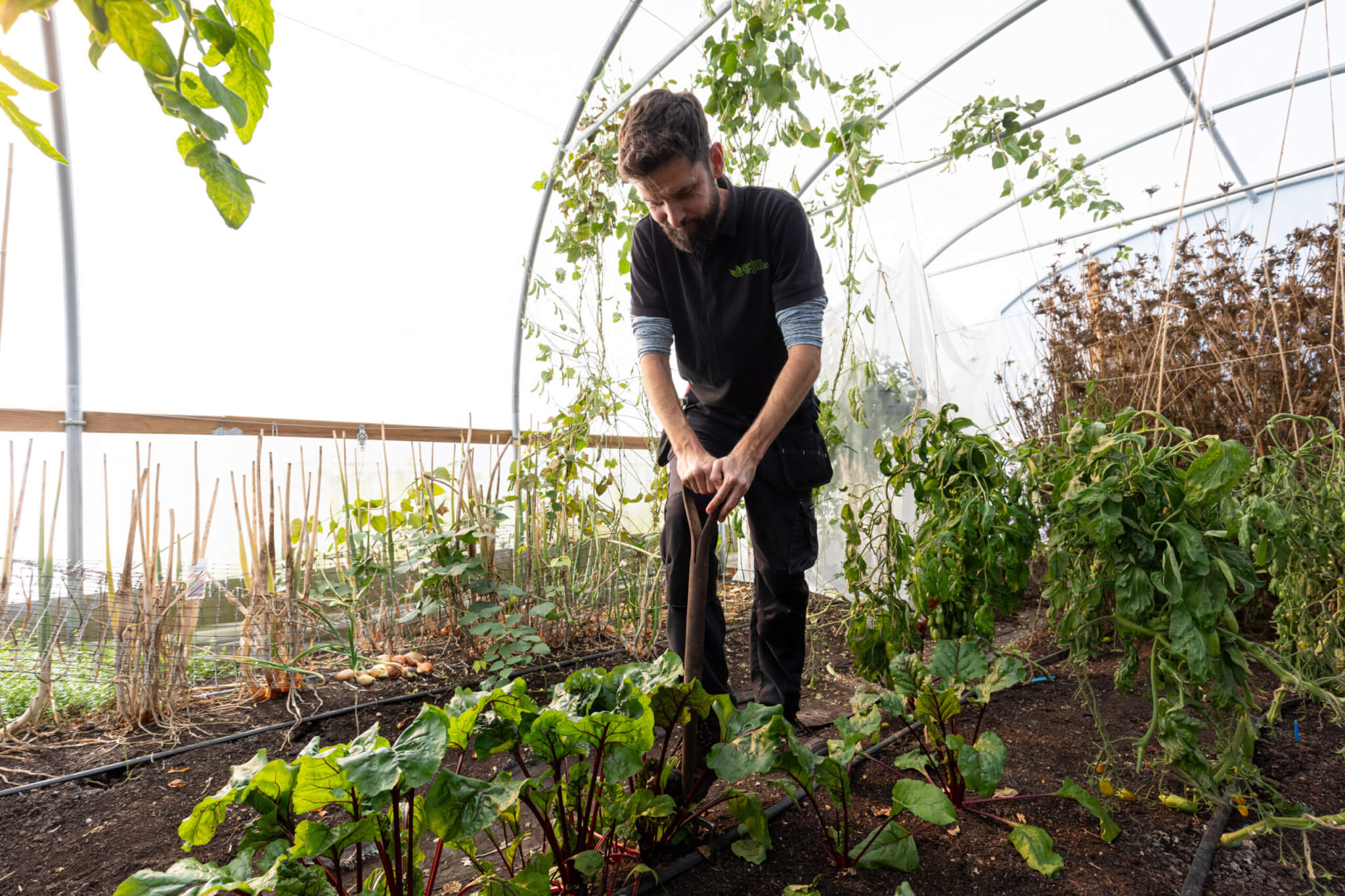





0 Comments